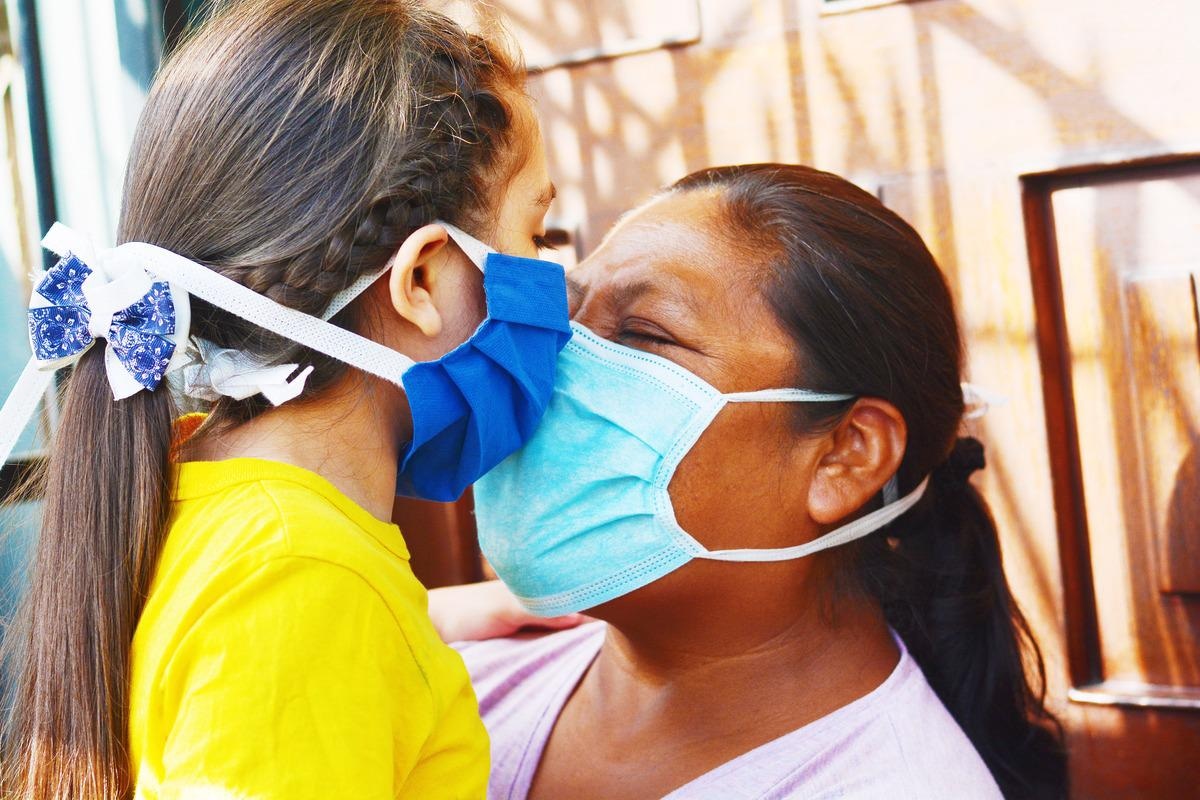In a recent prospective study posted to the medRxiv* preprint server, researchers compared the symptomology and severity of severe acute respiratory syndrome coronavirus 2 (SARS-CoV-2) and endemic human coronaviruses (HCoVs) infections in a community-based pediatric cohort in Managua, Nicaragua, from 2011-2016 and 2020-2021.
 Study: SARS-CoV-2 and endemic coronaviruses: Comparing symptom presentation and severity of symptomatic illness among Nicaraguan children. Image Credit: Ruslana Iurchenko/Shutterstock
Study: SARS-CoV-2 and endemic coronaviruses: Comparing symptom presentation and severity of symptomatic illness among Nicaraguan children. Image Credit: Ruslana Iurchenko/Shutterstock
Since the endemic coronavirus infections have greatly affected children, there may be a possibility of SARS-CoV-2 infection in a large proportion of children as the coronavirus disease 2019 (COVID-19) pandemic transitions to an endemic.
The study
The Nicaraguan Pediatric Influenza Cohort Study (NPICS) is an ongoing study started in 2011 in which parents/guardians of children gave written informed consent on behalf of participants and verbal assent was given by participants aged ≥6 years. Every year, blood samples were taken from each participant.
In the present study, the researchers evaluated the 100 blood samples from four-year-olds from 2011-2016 for antibody response to the spike protein for each of the four endemic HCoV (alpha: NL63, and 229E, beta: OC43 and HKU1) to confirm the assumption of high endemic HCoV infection rates in the cohort. Also, the researchers tested the 2021 blood samples for SARS-CoV-2 antibodies to confirm the high SARS-CoV-2 infections rates.
A respiratory swab was collected from those participants who met the testing criteria such as feverishness for participants under two years old; measured fever/feverishness and cough, sore throat, or rhinorrhea; severe respiratory symptoms such as apnea or chest indrawing; and hospitalization with respiratory symptoms or sepsis. Real-time reverse transcription polymerase-chain reaction (RT-PCR) was used to examine respiratory samples from 2011-2016 for each of the four endemic HCoV, influenza, respiratory syncytial virus (RSV), and human metapneumovirus (HMpV) and samples from March 2020 to September 2021 for SARS-CoV-2 and influenza.
The researchers considered symptoms to be associated with an infection if they occurred within 28 days of symptom onset; therefore, all participants’ symptoms and diagnoses were recorded during each clinic visit. The researchers defined acute lower respiratory infections (ALRI) as physician-diagnosed cases of pneumonia, bronchiolitis, bronchitis, or bronchial hyperreactivity. The symptom-specific risk differences between SARS-CoV-2 infections and endemic HCoV infections were calculated to compare the risk of symptoms. These were stratified by the following age groups: 0-4, 5-9, and 10-14 years. Also, the researchers evaluated symptom duration by comparing the time between each specific symptom onset and the last day participants presented with that symptom.
Results
In this pediatric cohort, 854 participants were found SARS-CoV-2 positive in 2021 and only 121 PCR-confirmed participants met the original testing criteria. The study results suggested that the participants have had at least two endemic HCoV exposures by the age of four in this cohort including at least one alpha and one beta HCoV infection. Therefore, symptomatic infections represented only a small proportion of all pediatric infections for SARS-CoV-2 and endemic HCoV.
The study findings also revealed that overall, disease presentation was very similar between endemic HCoV and SARS-CoV-2, with the frequent presentation of “common cold” symptoms. Also, there was great variability in symptom duration for SARS-CoV-2 and endemic HCoV infections. Since there was a difference in the duration of decreased appetite for the youngest participants and cough for those aged 5-14 years, the study suggested that some symptoms may last longer for SARS-CoV-2 infections.
Additionally, there was a difference in rhinorrhea duration between SARS-CoV-2 infections in 2020 and 2021, which denoted an increase in symptom duration among children due to SARS-CoV-2 variants. Furthermore, the risk of ALRI and severe illness from SARS-CoV-2 infections for children was comparable to the risk from endemic HCoV infections at the community level.
Limitations and conclusions
There are a few limitations associated with the study. The study data did not detect the most severe manifestations of SARS-CoV-2 including death or Multisystem Inflammatory Syndrome in Children (MIS-C) and other rare outcomes. Also, since genetic sequencing was not included in the study, the importance of variants in the presentation and severity of SARS-CoV-2 illness was not assessed.
In conclusion, the researchers observed that symptom presentation of SARS-CoV-2 infections at the community level was very similar to that of endemic HCoV infections and SARS-CoV-2 may be like another endemic HCoV for children. However, the long-term effects and the impact of repeat infections among children are still unknown.
Across age groups, risk of ALRI associated with SARS-CoV-2 was the same or lower 217 compared to ALRI associated with endemic HCoV infection.”
*Important notice
medRxiv publishes preliminary scientific reports that are not peer-reviewed and, therefore, should not be regarded as conclusive, guide clinical practice/health-related behavior, or treated as established information.
- Aaron M Frutos, et al. (2021). SARS-CoV-2 and endemic coronaviruses: Comparing symptom presentation and severity of symptomatic illness among Nicaraguan children. medRxiv. doi: https://doi.org/10.1101/2021.12.09.21267537 https://www.medrxiv.org/content/10.1101/2021.12.09.21267537v1
Posted in: Medical Science News | Medical Research News | Disease/Infection News
Tags: Antibodies, Antibody, Blood, Bronchiolitis, Bronchitis, Children, Cold, Common Cold, Coronavirus, Coronavirus Disease COVID-19, Cough, Fever, Genetic, Influenza, Pandemic, Pneumonia, Polymerase, Protein, Respiratory, Respiratory Syncytial Virus, Rhinorrhea, SARS, SARS-CoV-2, Sepsis, Severe Acute Respiratory, Severe Acute Respiratory Syndrome, Sore Throat, Spike Protein, Syndrome, Throat, Transcription, Virus

Written by
Saurabh Chaturvedi
Saurabh Chaturvedi is a freelance writer from Jaipur, India. He is a gold medalist in Masters in Pharmaceutical Chemistry and has extensive experience in medical writing. He is passionate about reading and enjoys watching sci-fi movies.
Source: Read Full Article
